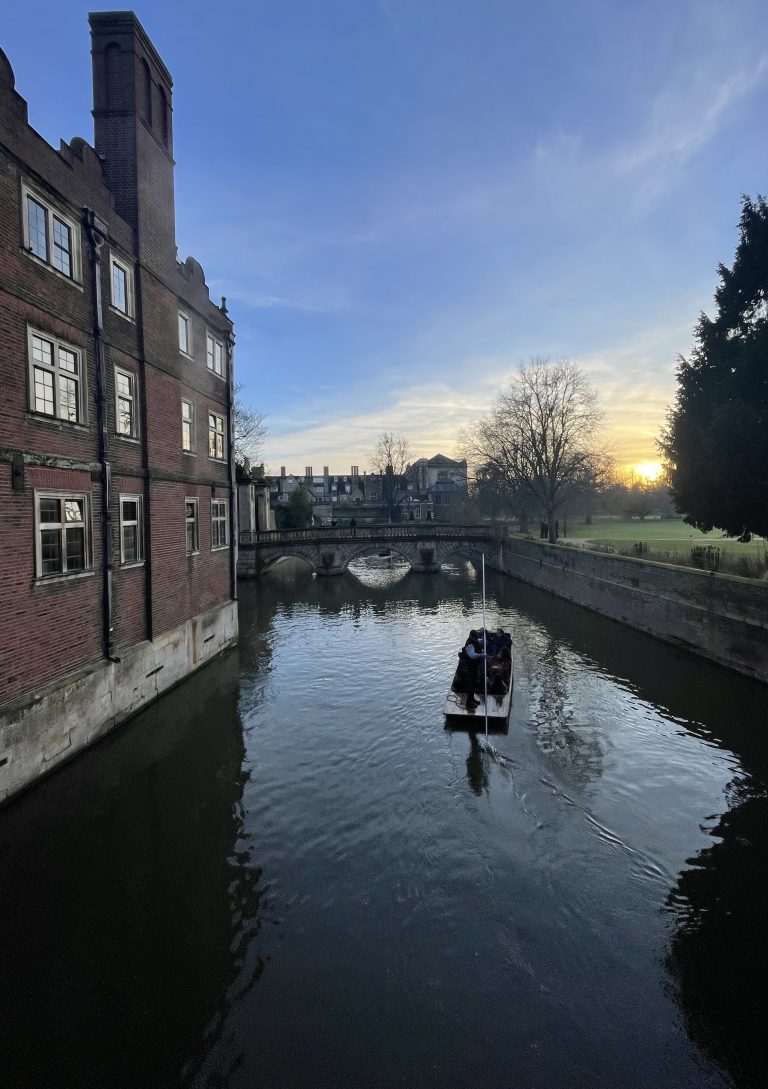Punting Guide: How to Punt & Professional Tips
Standing on dry land and watching a professional from a distance, punting looks rather easy. However, it becomes slightly more difficult when you’re balancing on the back deck of a self-hire punt, holding on to a 5 metre pole as you narrowly avoid colliding into the constant stream of oncoming traffic. Fortunately, we have put together a brief guide on how to punt, along with tips from professional punters, to help keep you dry and out of the water during your self-hire expedition.

Getting Started
There are two types of punts which travel along the River Cam; Large ferries, designed to seat up to 12 passengers during a guided river tour, and smaller self-hire punts, which can be rented by anyone over the age of 16. Most companies charge by the hour and will require some sort of deposit, such as a driver’s licence or bank card, just to ensure the boat is brought back on time and in one piece.
Where can I go and how long should I rent the punt for?
There are two routes along the River Cam which can be explored via Punt. The most popular runs along the backs, through the middle of 7 university colleges. A round trip along this route takes professional punters around 45 minutes to complete; if it’s your first time and you want to see everything, you might need a little longer.
The second option runs along the upper river, away from the city centre and out towards Grandchester Meadows. This route can take many hours to complete and is best suited for the long summer days, and best avoided during the winter. The river becomes very sticky and quite deep at times, so be prepared for a long trip.
How to punt
The basic principles of punting are fairly simple, you use a pole to push off the bottom of the river floor and propel the boat and yourself forward. As simple as it sounds, you would be surprised at the number of Cambridge Uni students who struggle with the physics of punting.
Where to stand
Start by standing on the back deck of the punt. The boat will rock from side to side, so be ready. Although it may wobble, it’s almost impossible for the boat to flip over or sink. Passengers inside the boat should always keep their hands inside. Holding the sides could end in broken fingers if two boats collide.
Holding the pole
There are two options for poles: traditional wooden or lightweight aluminium. It’s almost always a better option to go for lightweight aluminium if given the option. The one exception being during the cold winter months, when a wooden pole will be slightly less frozen and less hand numbing.
Most poles are around 3 metres long in order to reach the deepest parts of the river bed and come with a metal foot, designed to help grip the river bed. The side of the pole with the foot should always remain in the water whilst punting to avoid hitting passers by.
Pushing The Punt
To move forward, point the pole at a 45 degree angle behind the boat, holding it as close to the top as you can reach. Once the pole hits the river bed, push the boat off the ground to propel forward. Focus on keeping momentum with slow steady pushes, rather than pushing with too much force straight away.
Be aware that there are many sticky spots along the river where the pole can become stuck. If this happens, giving the pole a twist should help it loose. If the pole remains stuck – let go. You can either stay with the pole or the boat, not both. All self-hires come equipped with a rescue paddle In the event that you lose the pole.
Steering the Punt
Once the boat is in motion, you can use the pole as a rudder to steer and change direction. If the pole is parallel to the punt, it will go straight. If the pole is placed at an angle, the punt will begin to turn at a similar angle. Try to keep the pole and punt as straight as possible by using long gradual pushes.
For punters with a little more experience, angeling the pole during the push will allow for much quicker change in direction. However, if the angle is too much, it will cause the punt to zig-zag.
River Etiquette
Stick to the right side of the river. When going under bridges, aim for the arch furthest to the right. Entering the wrong arch or being on the wrong side of the river can quickly end in a head on collision and an unexpected swim.
Time to go punting?
Hopefully this brief guide has helped better prepare you for your punting expedition. If the complexities of punting sounds too much, why not consider joining one of our shared punting tours? Our tours run daily throughout the year and provide some of the best views of the college backs!
